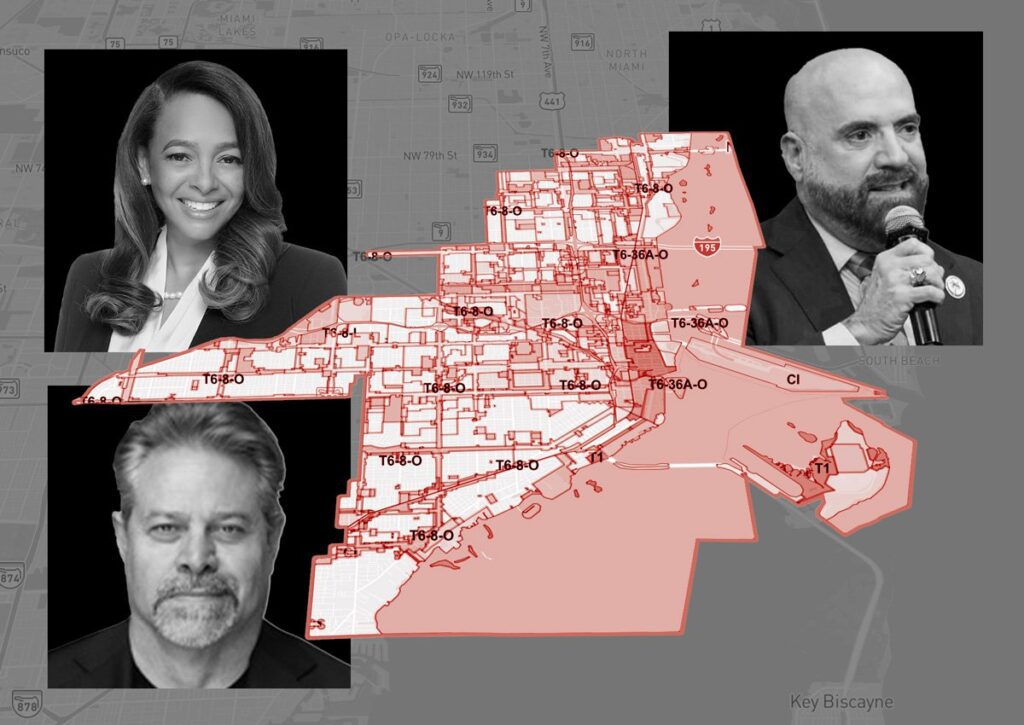Miami Residents Voice Opposition to Transit-Oriented Zoning Expansion
At a recent commission meeting in Miami, community members expressed significant concerns regarding the city’s proposed expansion of transit-oriented zoning incentives. Locals criticized the initiative, with one resident labeling the endeavor as “another money-motivated manipulation at Miami City Hall.”
Understanding the Proposed Ordinance
The ordinance aims to position Miami competitively against Miami-Dade County’s rapid transit zoning and the state’s Live Local Act. Key points of the ordinance include:
- Bypass for Rapid Transit Zones: Under the new rules, projects located within Miami-Dade County’s rapid transit zones can bypass local city approvals.
- Administrative Approval: The city is required to approve projects that comply with the state’s workforce housing legislation under the Live Local Act.
- Neighborhood Impact: The ordinance will establish Transit Station Neighborhood Districts within one mile of existing or approved transit stations, contingent on projects offering enhanced mobility solutions.
Development Restrictions
Developers will still be subject to a multi-layered approval process. Notably:
- Areas qualifying under the ordinance must adhere to height restrictions set by the city’s T6-8 zoning, which allows buildings up to eight stories, with potential bonuses for additional height.
- Neighborhood conservation districts, including parts of Coconut Grove, will be exempt from these new regulations.
Community Concerns
Despite the city’s intentions, many residents remain unconvinced:
- Quality of Life at Stake: Elvis Cruz expressed deep concern, indicating that the city’s focus appeared to cater more to developers than the residents who voted for them. “This is an opportunity to show that you care about the people… rather than the developers who gave you campaign money,” he stated.
- Neighborhood Character Threatened: Debbie Dolson from Coconut Grove articulated fears that the ordinance would risk “out of scale and out of character development” in local neighborhoods.
Critique of ‘Buzzwords’
Dolson also highlighted a troubling trend regarding new developments, stating:
“We keep hearing these new buzzwords, ‘affordable housing,’ ‘workforce housing,’ ‘transit corridor.’ These are attached to every single new development, which gives them approval. The result is fewer low-priced units and largely high-priced units,” she noted.
Calls for Deferral
Community advocates like Mel Meinhardt, chair of Friends of the Commodore Trail, urged the commission to reconsider. Meinhardt described the implications of the ordinance, claiming it would transform Coral Way into a “complete canyon,” and he raised concerns regarding discrepancies between the presentations to the Planning Zoning and Appeals Board versus what commissioners were shown.
“Give your staff the time to really understand this thing. It’s big, it’s bad, and it could really hurt us,” he asserted.
Conclusion
As the commission moves forward with the agenda related to transit-oriented zoning incentives, the voices of Miami residents remain crucial in shaping the future of the city’s neighborhoods. Ongoing community engagement will be essential as these developments progress, ensuring that local quality of life and the character of neighborhoods are preserved amidst rapid growth.
Stay informed by reading more about transit-oriented developments in Miami and their potential impacts on local communities here.
By providing clear summaries and community perspectives, this article emphasizes the importance of considering local voices in urban development discussions. Further insights into housing strategies and zoning regulations can be found here.


